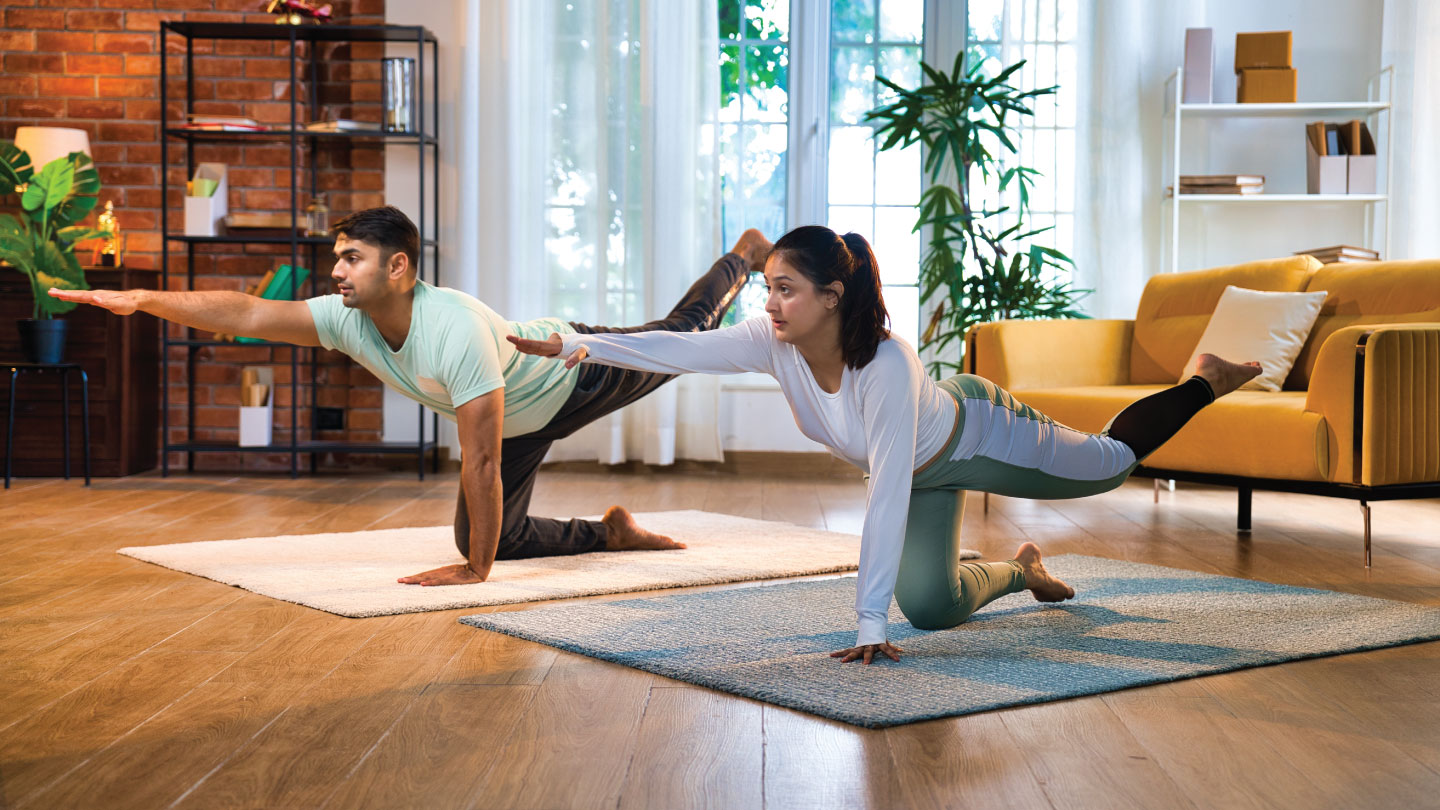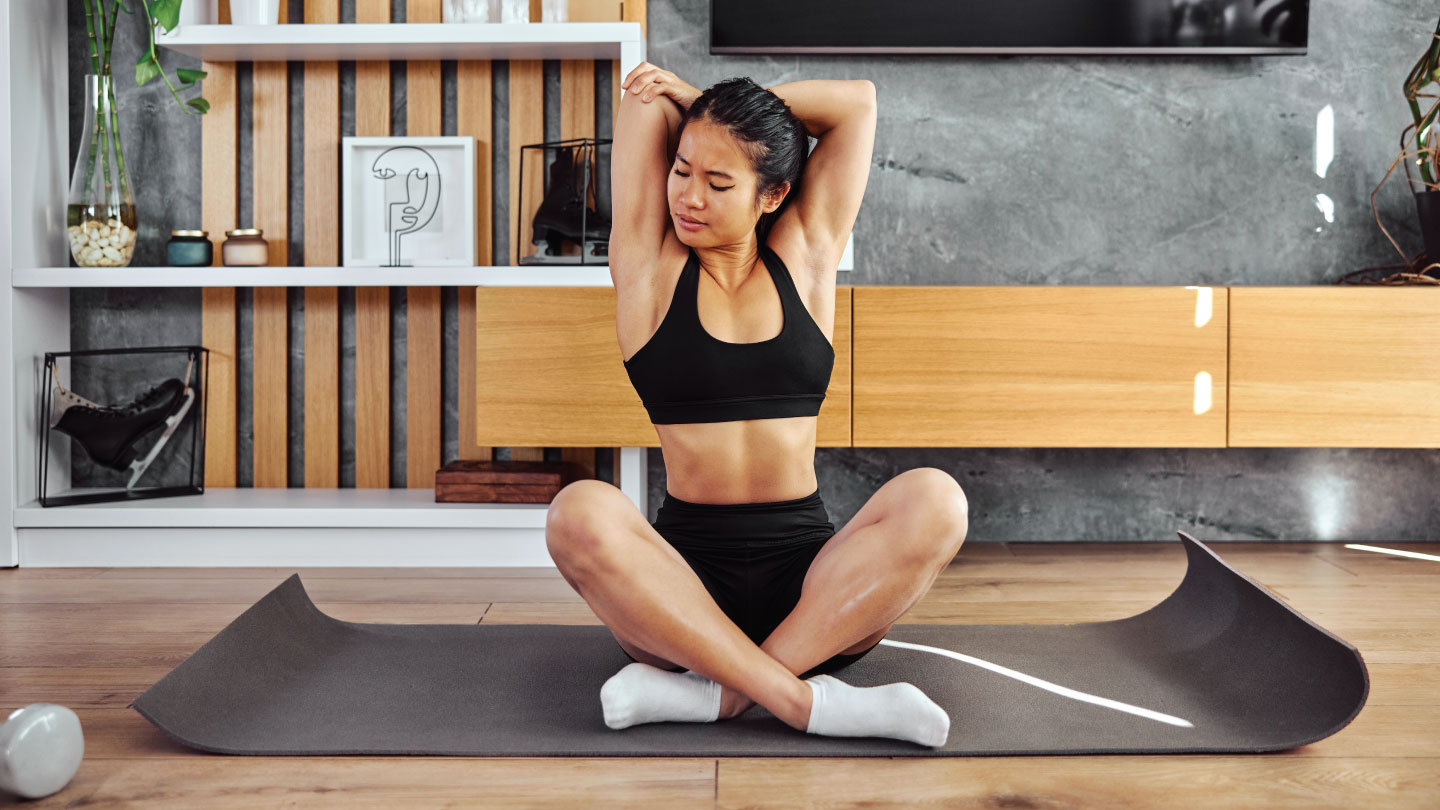Movement
Beginner’s Guide to Your First Pull-Up
Unlock your strength and conquer your first pull-up with our beginner's guide. From essential exercises to proper form, learn the steps to elevate your fitness journey.

Pull-ups are known to be one of the most challenging bodyweight exercises. Mastering the pull-up is a real test of strength, with benefits including improvements in pulling strength, muscle growth, posture, and stability. It takes time, dedication and sheer commitment to ace the pull-up game. And if you're a beginner in body weight training, completing your first pull-up might seem like a daunting task. However, if you’re serious about making this move your knack, you’re in the right place. We are here with a beginner’s guide to help you get your first pull-up.
Also, it is important to note that physiologically, men and women have differences in muscle mass, upper body strength, and centre of gravity, which can affect the ease of performing certain exercises like pull-ups. Men generally have greater upper body strength due to higher levels of testosterone and typically have a higher muscle mass-to-body weight ratio compared to women. Women tend to have a higher percentage of body fat, which can affect their strength-to-weight ratio.
Setting the right expectations for doing a pull-up involves recognising these physiological differences and understanding that it may take more time and effort for some individuals, regardless of gender, to master the exercise.
Need all your wellness solutions in one place? A whole new world awaits just a click away.
Related story: A Guide To Safely Mastering Kettlebell Workouts
Step 1: Dead Hang on the Bar
Start by gripping the pull-up bar with your palms facing away from you (overhand grip) at about shoulder width apart. Hang from the bar with your arms fully extended. Try to accumulate 30 seconds, then gradually increase the time to 45 seconds, a minute, and eventually a minute and a half. This will help build your grip strength.
Step 2: Build Scapular Strength
Once you've built up your grip strength, focus on scapular strength by doing scapular pull-ups. Hang from the bar and then pull your shoulder blades down and together without bending your arms. This will help strengthen your shoulder blades and prepare you for the full pull-up motion.
Step 3: Focus on Negatives
Next, work on negatives to build strength in your lats, traps, and shoulders. To do this, jump up to the bar so your chin is above it, then slowly lower yourself down with control. Aim to lower yourself over a period of time, starting with 3 seconds and gradually increasing to 5, 7, and eventually 10 seconds. This also teaches you how to engage the core and the lower body over the period of time
Step 4: Putting it All Together
Now that you've built up your grip and scapular strength, and practised the lowering motion with negatives, you're ready to attempt your first pull-up. Start by jumping up to the bar and pulling yourself up until your chin is above it. Focus on engaging your core and lower body as you pull yourself up. If you can't do a full pull-up yet, that's okay! Keep practising the dead hangs, scapular pull-ups, and negatives until you build enough strength to do a full pull-up.
Related story: A Physio's Favourite Exercises To Improve Mobility
7 Strategies to Master Pull-Ups
Focus on Your Form
Instead of doing many pull-ups quickly, concentrate on doing each one with proper form. This means pulling yourself up until your chin is over the bar and lowering yourself back down in a controlled manner. Concentrating on proper form ensures you're engaging the right muscles and reducing the risk of injury. It's about quality over quantity, so take your time with each rep.
Engage Your Abs
Tightening your abdominal muscles while doing pull-ups can help stabilise your body and reduce the strain on your arms and back muscles, making the exercise easier and more effective. Imagine pulling your belly button towards your spine as you lift yourself up, maintaining a straight line from head to heels.
Use a Resistance Band
If you're just starting out or struggling to do pull-ups without assistance, a resistance band can help. Loop the band over the pull-up bar and put one foot in it to provide support as you pull yourself up. Make sure the band is securely attached to the bar and that your foot placement in the band feels stable before starting your reps.
Start with a Strong Band
Choosing the right resistance band is key. Starting with a stronger band allows you to focus on mastering the movement while still providing enough assistance to complete the exercise correctly. Begin with a resistance band that provides enough support to help you complete the exercise with good form. As you get stronger and more comfortable, you can gradually switch to lighter bands to increase the challenge.
Practise Chin-Ups
Practising chin-ups helps in acing pull-ups effortlessly. This variation targets slightly different muscles than traditional pull-ups. Grip the bar with your palms facing towards each other, like you're holding a baseball bat, and alternate which side of the bar your head goes to with each rep. This helps you develop proper form which will facilitate progression. Keep your core tight, and come down as slowly as possible
Incorporate Negatives
Negatives consist of doing the exercise the other way around. In this case, instead of focusing on the up movement of the pull-up and releasing during the down movement, you will be focusing on getting down from the bar as slowly as possible. Simply jump to the pull-up bar, until your head is above it, and then come down as slowly as possible. This helps build strength and control, which are important for mastering pull-ups and preventing injuries.
Keep Strength and Weight in Check
Improving your pull-up ability involves considering two factors: strength and weight. If you decrease your body weight, you'll require less strength to perform pull-ups. Conversely, if you enhance your strength, you can handle carrying a bit more weight while doing pull-ups.
Related story: Should I Be Doing Cardio Before Weights? An Expert Weighs In
How Long Will It Take To Achieve My First Pull-Up?
It’s difficult to quote a definite timescale as it varies from individual to individual. There are many factors involved in determining how quickly you can achieve your first pull-ups, including your body weight, core strength and upper body strength. If you’re heavier, it’ll take you longer to pull your own weight and similarly, if you have little muscle mass your first pull-up won’t come anytime soon. However, consistency and practice are the keys to achieving this. Also, if you’re just starting out, do not practise more than 3 times a week and increase the number of sessions gradually.
Need all your wellness solutions in one place? A whole new world awaits just a click away.
When you’re looking to take your exercise regime to the next level, head to UR.Life Studio. We are the premier destination for fitness in Hyderabad, offering customised fitness plans and more for your needs. Our team of celebrity trainers, certified nutritionists and experienced physiotherapists are here to help you unlock your full potential.
Our two locations in Jubilee and Kavuri Hills in Hyderabad offer a swimming pool, gym, spa, rehabilitation centre and cafe to ensure you reach your health objectives. Our gym offers classes in aerobics, CrossFit, Zumba, and more. Come try our world-class gym and experience the difference for yourself.
EXPLORE MORE
Simple, practical fitness advice to help you feel stronger, healthier, and more consistent in 2026.
Callisthenics isn’t about flashy Instagram moves or avoiding the gym. According to celebrity fitness and lifestyle coach Krishna Sadvale, it’s one of the most practical ways to build strength, control, and confidence in your own body.
A home-based yoga routine can elevate energy, sharpen focus, and nurture mental calm. Discover why it’s worth starting now.
Your posture is whispering a story about stress, screens, and slouching. Here are 6 exercises you must try!






.jpg)
.jpg)


